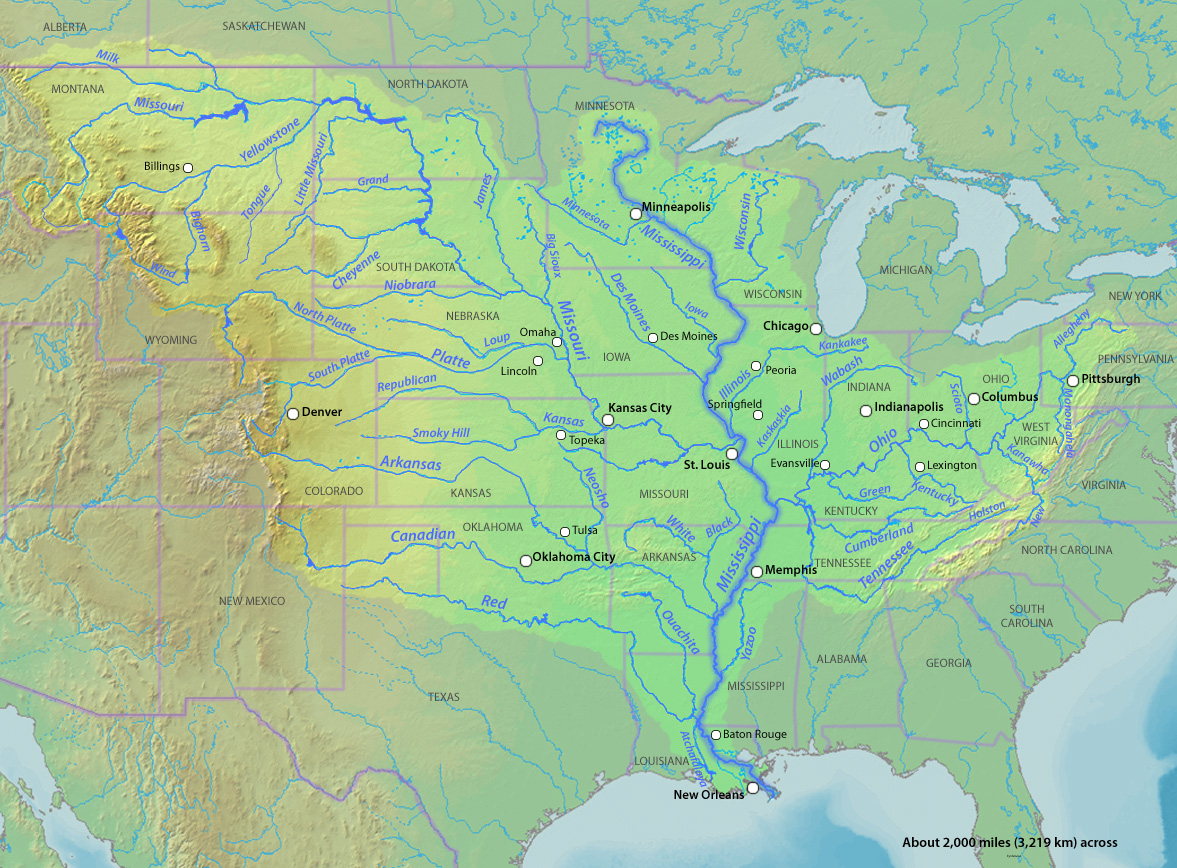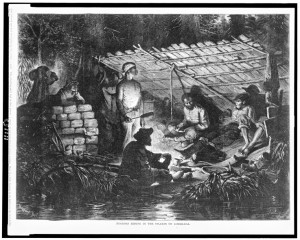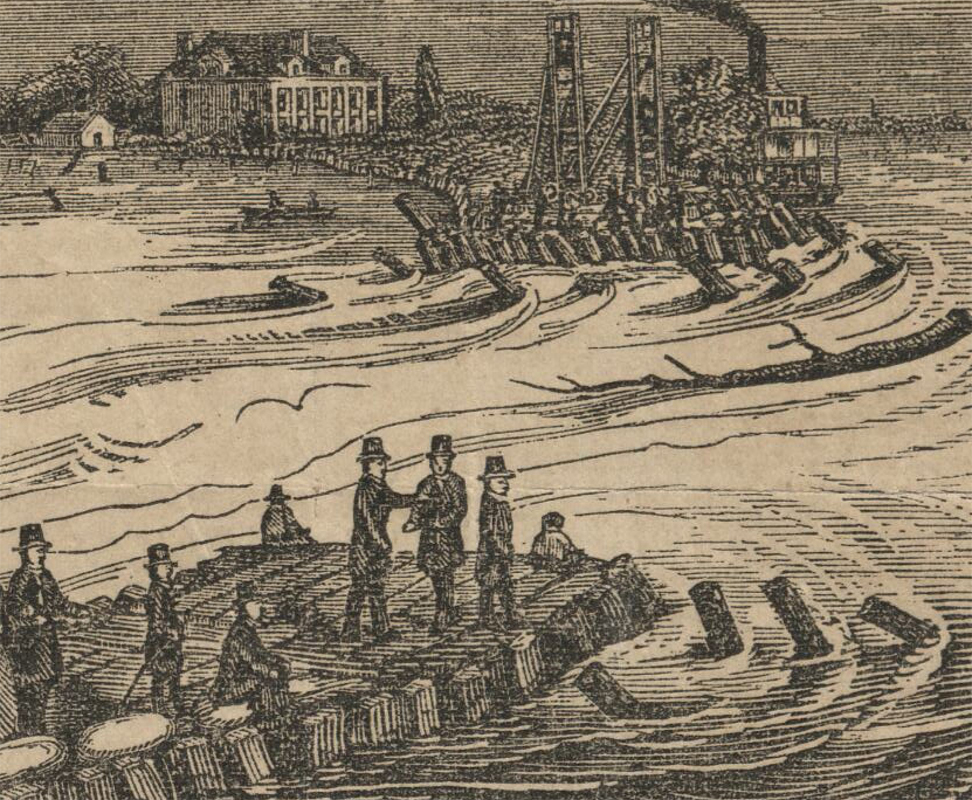The First Post…
Hi there.
So, it’s not exactly clear to me what the first post is supposed to look like. My friends over at Scapegoats and Panaceas, The Contemplative Mammoth, and Curious Terrain seem to have just launched right in, as if their blogs had suddenly started broadcasting posts midstream. Meanwhile, it looks like AZ, a dear friend over at Dining and Opining, decided to acknowledge her entry into the blogosphere.
Not that it really matters. If I’m realistic about this at all, very few people are going to actually read this first post. Blogging is, after all, ephemeral and what I write here won’t have much currency five posts from now.
Nonetheless, thanks in part to my adviser’s consistently “meta” approach to mentoring (classic questions include: Why do we give exams? What are the attributes of a good presentation? What should a table of contents achieve?), I’ve decided there are a handful of questions a first post should at least try to answer.
What is this blog for?
I’ve started writing here as a companion project to my dissertation (more on that in a moment). I figured a blog provides the space to do a number of things that might help shepherd me through the long, often frustrating process of completing a doctoral degree.
First, in as much as all writing is also thinking, posting here inevitably provides grist for the mill as I think through knotty questions of narrative, argument, and evidence.
Second, Porous Places provides a venue for writing in a much more playful register compared with the confines of a dissertation. I plan to write here about my research in ways that (I hope!) might appeal to a much broader audience than the one scholarly work typically addresses.
Third, I think too often the tortuous (and frequently torturous) process that goes into producing research gets obscured by the slick coherence of the finished product. Research is messy, provisional, and constantly subject to revision for far longer than most people imagine. I’m hoping that Porous Places will serve as a useful place for both acknowledging that messiness and to invite comment and conversation on my work in progress.
Fourth, this is also a place for what I (in another nod to my adviser) would like to call “cool stuff.” While my dissertation needs to fulfill certain criteria in terms of analytical rigor and scholarly contribution, I’d also like to think that it’s going to contain a whole bunch of surprising, quirky, interesting, thought-provoking stuff, stuff that I hope people stumbling across this blog will find just as compelling as I do. Porous Places will catalogue and discuss some of the most striking finds of my dissertation research. It will also be a place for me to write about the anecdotes, events, documents, characters, and so on that, while perhaps really “cool,” just can’t fit within the limits of a dissertation. Some things just don’t make the final cut in terms of narrative or analytical coherence. And some things, while perhaps conceptually related to my work, just don’t fit the focus of the project. Porous Places gives me a way to at least sink my teeth into some of that material instead of casting it aside entirely.
Which reminds me: this fourth point isn’t just about sharing “cool stuff.” I’m hoping that the blog will also serve as a valuable reminder for me of all the things I love about this project. Like I said, writing a dissertation is a long, difficult process. Anything that can keep up a graduate student’s enthusiasm for their subject in the dark days is a valuable thing indeed.
Ok, so I’ve made it clear that this blog is a sort of companion piece to my dissertation project…
So what is my project about anyway?
My dissertation is a historical geography of water in the Mississippi River delta from about 1850 to the present. Now, I realize that’s a pretty opaque description. For one, what the hell is “historical geography”? While my next few posts will do a lot more to unpack that sentence, for now it’s probably enough to elaborate on the project’s main features.

First, I should emphasize that the delta I’m talking about is a landform. That is, I’m referring to the greater river delta of the Mississippi and not the agricultural “delta” 200-300 miles to the north. That Mississippi Delta isn’t really a delta at all, but rather an alluvial plain lying between the Yazoo and Mississippi Rivers (I’ll be writing more on this distinction in the future).

I came to focus on this particular region precisely for its sogginess. Rainfall from 41% of the lower 48 United States gets funneled down to the river delta where it spreads over the landscape in a network of swamps, rivers, and bayous. As a landscape built up by millennia of continental sediments deposited by the meandering Mississippi, the delta is relentlessly flat and wet.

It’s in that geographic context that I’m trying to understand the ways people have negotiated watery landscapes in different ways at different times. How did they approach living in such soggy territory? What were their relationships to wetlands, the Mississippi River and its distributaries, seasonal flooding, waterborne illness, etc. and how have those relationships changed over time? Likewise, how did people’s attempts to live in the delta transform not only the landscape, but also their own livelihoods, cultural values, and social systems? In many ways, the dissertation is an exploration of the changing cultures of water that have shaped both the region’s landscapes and the people living in them.

To try and answer some of these big, messy questions, I begin with rice agriculture and hydrology on mid-1800s Louisiana river plantations and (likely) end with hurricane Katrina. Along the way, I’ll be examining bald cypress timber harvesting, oil and gas extraction, and petrochemical production, three industries that both deeply depended on, and deeply transformed, the ecological and geological history of the delta.
As I proceed with this research, there’s also one overarching conceptual theme that guides the questions I pose and the evidence I gather: porosity. Though it sounds quite abstract on the surface, it mainly means I’m interested in stories that suggest the historical fluidity of environmental boundaries that humans have taken for granted in different ways at different times. Examples would include:
- Levees separating river from nineteenth-century plantation
- Gradients between salt and freshwater
- Boundaries between urban center and sinking or eroding marshes
- The conceptual and ecological boundaries between swampy wilderness and reclaimed (or “civilized”) agricultural land
- The skin that separates human biology from waterborne diseases or toxins

Now, again, these are big, messy questions, but, this is also what a work in progress looks like.
Hopefully that’s gone some way toward clarifying not only the purpose of the blog, but also some broad strokes regarding the research that will be fueling its content. But I’d also like to offer some further clarification by concluding with the answer to just one more question:
What kinds of things will I be posting?
Well, I alluded earlier to the fact that I plan to create at least a few posts further elaborating on some of the vaguer sounding territory of my project description. There will absolutely be a post on the field and practice of historical geography.
I also plan to devote a more extended piece to the physical geography of the Mississippi River delta (with some more information on why it’s really important not to confuse it with the agricultural region to the north). Indeed, there will probably be a whole post devoted to the peculiarities of deltaic landscapes. Other examples would include: the Mekong River delta of Southeast Asia, Egypt’s Nile delta, and the Rhine-Meuse-Scheldt delta in the Netherlands and Belgium.
It goes without saying that I’ll be writing posts based on bits and pieces of dissertation chapters as they get produced. I’ll also, however, be creating posts commenting on current events or other content from around the web that either pertains directly to the delta region or some of the conceptual themes that run throughout the project. Anything to do with watery places and porosity/permeability is absolutely fair game.
I’ll be posting every Sunday, so feel free to follow me on Twitter, subscribe to my RSS feed, or subscribe by email (in the sidebar to the right).
Thanks for reading!

3 Comments
Join the discussion and tell us your opinion.
You know, I’d never given much thought to what a first blog post should look like, and didn’t even quite know what my first post was, until I followed your link. But now, after reading your post and giving it some more thought, it seems to me that setting an intentional entry point is so valuable. Why, after all, are we doing this? What has moved us to begin this process of putting words to our thoughts, and sharing those words with some wider public? I think you’ve done a top-notch job in answering these questions, in making this blog seem relevant and compelling (both for yourself and for your potential audience). I can’t wait to read along, dear friend.
Being from the ‘broader audience” sector, I experienced your blog as very reader friendly and interesting. Cannot wait to read the next one!
[…] Post navigation ← Previous […]